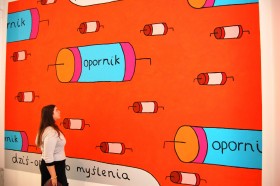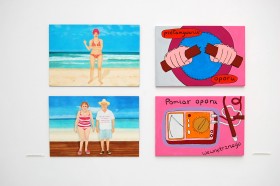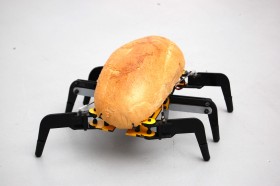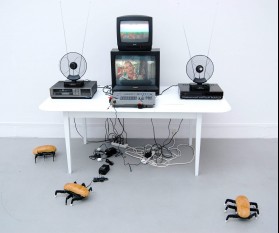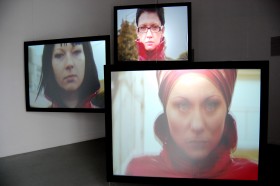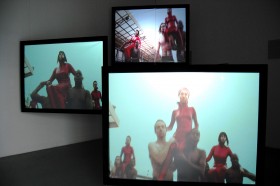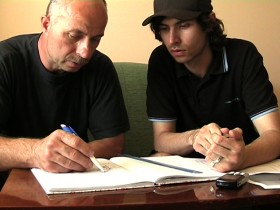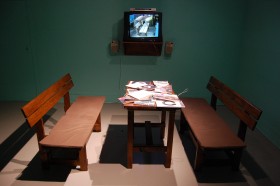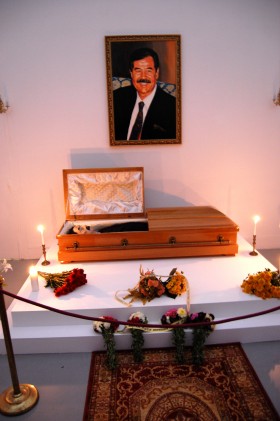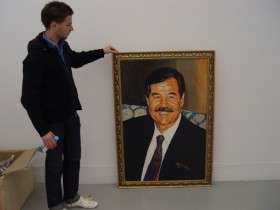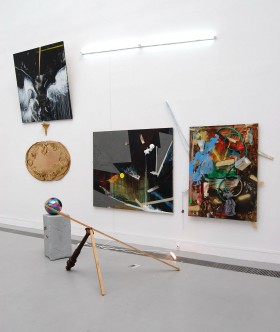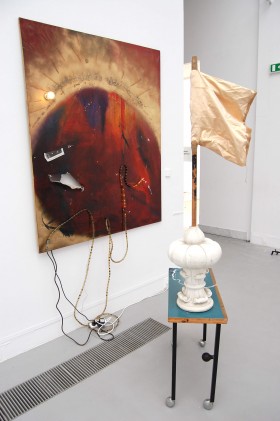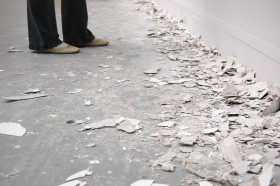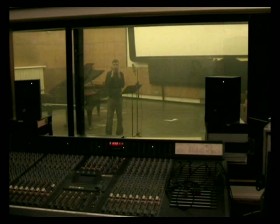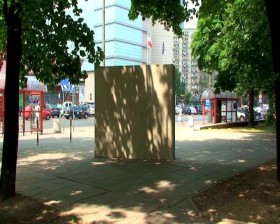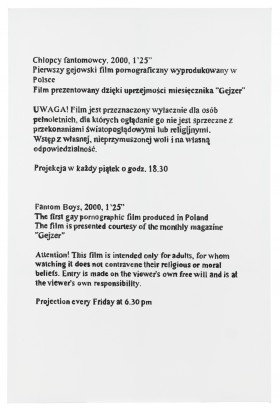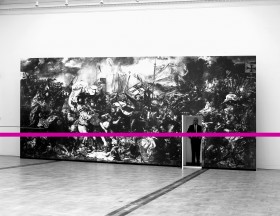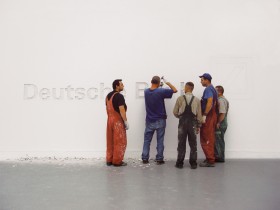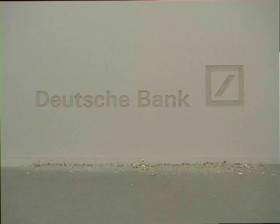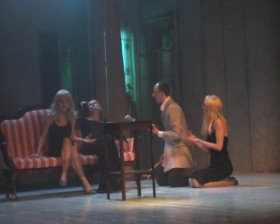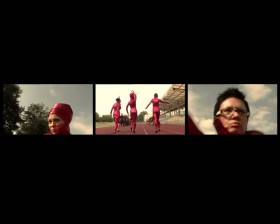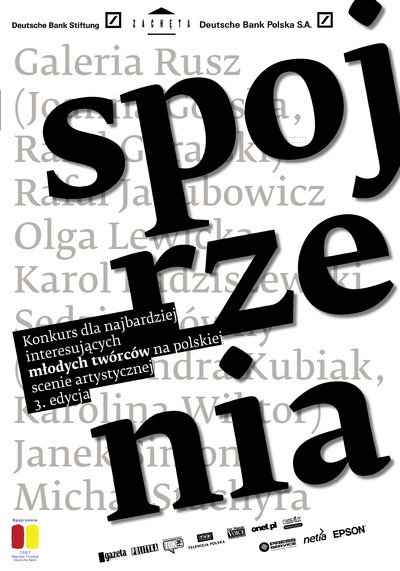VIEWS 2007 Deutsche Bank Foundation Award
14.09 – 11.11.2007 VIEWS 2007 Deutsche Bank Foundation Award
Zachęta – National Gallery of Art
artists: Galeria Rusz, Rafał Jakubowicz, Olga Lewicka, Karol Radziszewski, Sędzia Główny , Janek Simon, Michał Stachyra
curator: Monika Szewczyk
cooperation: Julia Leopold
Views 2007 – the Deutsche Bank Foundation Award is a competition for young Polish artists, now in its third edition. Up until 11th November, it will be possible to see in Zachęta the works of the artists nominated for this award. This year there are 5 artists and 2 artistic groups: Galeria Rusz (Rusz Gallery), Rafał Jakubowicz, Olga Lewicka, Karol Radziszewski, Sędzia Główny (Chief Judge), Janek Simon and Michał Stachyra. These artists were selected during the long deliberations of a 14 person nominating committee on 13th April. The competition Views is made possible thanks to the Deutsche Bank Foundation and Deutsche Bank Polska S.A. The organiser of both the competition and the exhibition of the artists nominated for the award is Zachęta National Gallery of Art.
The successive editions of the exhibition Views recall the circles of water that appear after throwing in a stone... their range is ever wider. In a certain way they give an image of the young Polish artistic scene, forming a record of its continually changing condition. This year’s exhibition presents a selection of seven creators whose activity has captured our attention, has delighted and intrigued us, making it impossible for us to remain unmoved. A common feature of the majority of the works presented here is a dialogue with culture and a post-critical relation to politics and social mores. Here we can find a searching for and revealing of absurd and boundary situations, and of subversive actions that remain in tight relationship with reality. There is an openness to dialogue, a sense of humour verging on irony, that is not without a distance towards one’s own creation. Equally a reflection on the place and role of art, the sense of creativity, the role of art institutions and the relation with the viewer are all very present in the works of the young generation of Polish artists presented at the exhibition.
An interesting example of this is the painting of Olga Lewicka, which it is impossible to interpret without a consciousness of a deeper level – of multiple citations and references to culture (including mass culture), art and philosophy. Force & Grace obviously constitute an opposition, but also mutually are one another’s mutual condition. The paintings presented, sometimes somewhat anachronical in form, serve purely to open up a process of reflection; they are not in any way finite, not in any way closed, they are not an answer to any question, but the record of a start, an impulse. Their aesthetics lead us in the direction of an apotheosis of artifice and “trash” abstraction, of a superficial chaos, or perhaps not superficial, but rather obvious, referring us to the heart of things.
Rafał Jakubowicz attaches great importance to the context and significance of the place in which he exhibits. Above and beyond its other obvious functions the Deutsche Bank Foundation Award is also a way of strengthening the image of the firm. It is a run of the mill activity addressing a specific sector of the public. However, being perceived as a patron of contemporary art and collaborating with a gallery is not by any means an obvious way of building the image of a firm, and certainly not one that everybody is responsive to. And likewise an artist cannot make “everybody” receptive to the sense of his work, only those who are “sensitive”, careful enough. Quite literally the logo of the bank has been carved out in plaster on one of the gallery walls and then covered in plaster of Paris. A big, real (physical) effort and such an enigmatic result: a white wall from the moment of entry to the final effect, a closed bracket, under which is hidden a sense whose recording is documented only in the folder accompanying the exhibition imitating a Deustche Bank folder.
Karol Radziszewski is an artist of a very wide range of interests and artistic strategies: a painter, a publisher and editor of his own magazine, the author of video films and social actions, and a member of the Warsaw collective Szu Szu. The work presented by the artist in Zachęta is situated firmly in the context of the competition Views 2007 (a kind of day room in which it will be possible to take time to get to know the artist’s achievements), but also stands in close relation with the artist’s earlier projects House and I Always Wanted. This project peaks of Radziszewski’s strong family ties, of an acceptance which is beyond understanding, and of connections, but at the same time of the emotions that are linked to the competition itself, of being prepared for a contest, of determination and of the continuous unconsciousrace in which we are all competitors.
Janek Simon is interested in unsystematic cognitive activity, as for example in the destruction of objects by a child. By creating absurd mechanisms, he reminds us of the absurd around us. He generates nonsense, in which the nonsense of the everyday is seen as in a mirror. Cracow bread-robots move around the exhibition room: absurd objects, without any function. A video mixer transforms two television programmes. The mixing gives the impression of a shuffling of reality, causing a psychedelic confusion out of the obvious and everyday. It would be possible to see in these works a metaphor of manipulation, but the most important thing seems rather the theme of the experimentation with the everyday, of an action beyond schemata.
Michał Stachyra’s work, Farewell, is a consequence of the project Defence Mission realised by the artist in Lublin dealing with the feeling of the threat of terrorism worldwide. In Zachęta this takes the form of the presence of a guard equipped with a metal detector. The guard is paradoxically guarding the corpse of Saddam Hussein. The building of a catafalque by Stachyra is not an attempt to rehabilitate the director, but a gesture dictated by cultural norms, and moreover by the simple human decency which demands that dignified care be taken of the remains of the dead, even those of an enemy. This work takes on special significance in the light of the media relations of the imprisonment and then execution of Hussein.
Sędzia Główny/Head Judge (Karolina Wiktor and Aleksandra Kubiak) are authors of radical performances focussed on their own bodies. All the group’s actions are based on the digging out and unveiling of the mechanisms that govern society. Their strength lies in the true and uncompromising manner in which they talk about their own experiences and observations on the culturally dominant mechanisms of the subjection of women. In Zachęta Sędzia Główny present a video installation based on the myth of the Erinyes, the gods of revenge who maintain social and natural order, presented as women with bodies burnt on coal, with snakes instead of hair and sometimes with dogs heads. Remaining in a gender context, Sędzia Główny undertakes an attempt at an analysis of our contemporary condition and the level of the debate on the question of social justice and taboo.
Galeria Rusz/Rusz Gallery (Joanna Górska and Rafał Góralski) is known first and foremost for their realisations in public space: painted billboards with worrying messages, criticising and commenting on reality and offering fairly subversive portraits of Polish society. Their presentation at the exhibition Views (billboards in front of the gallery, paintings and murals) focuses on the theme of resistance, in a wide understanding: starting from historical associations touching societies, such as resistance movements, passive resistance, to personal experiences, being resistant, internal resistance, resistance to change, or being resistant to thought or actions. A key work thus becomes the mural with a drawing depicting an electrical resistor and the slogan, “Once a symbol of active resistance, today resistance to thinking.”
In the name of the jury of the 3rd edition of the competition “Views 2007”, it gives me great pleasure to announce the winner of the Deutsche Bank Foundation Award. After many hours of very intense debate we have decided that the artist that we wish to nominate, both in terms of his achievement over the last two years and his creative potential, is Janek Simon. We give the award to Simon on account of the charming lightness of his art, for the unpredictable games and traps that it sets the viewer, for its subversive humour and apocalyptic visions presented on the micro-scale of the gallery. We value him for his methodical widening of the language of contemporary art through incursions into the lexicon of popular culture: a club aesthetic, D.I.Y. strategies, the world of computer games and instruction manuals, of reconstructed technology and retro-futurist visions. In Simon’s work, this process takes place without a banalisation of his presentations; the artist, in a way quite unique for the Polish scene, he raises essential questions in new ways, signalling both social threats and collective fantasy, while at the same time taking up a significant position with regard to society. We wish to reward Simon for the anarchic fantasy of his projects over the last two years, in particular for the exhibition of contemporary art in Madagascar, his wandering bread insects and his hand-made constructed tools. We value him for his conscious inscription of failure and catastrophe into the risk-taking of art, and also for his constructor’s capacities. We would also like to underline the way in which Simon methodically goes about introducing into Polish critical art, new, subversive and anarchistic strategies and methods that belong to the new generation. We give him this award on account of the complexity and multi-layered nature of his art: for his taking up position on the side of Gombrowicz, and not with Żeromski.
Sebastian Cichocki – Head of the Jury
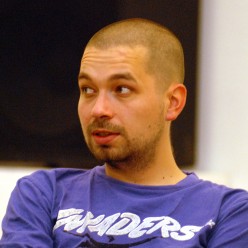
born in 1977 in Cracow where he still lives and works. From 1999-2001 he studied in the Sociology Department of the Jagellonian University, and from 1997-2001 he also studied in the Psychology Department of the same university.
The artist creates surrealist mechanisms which relate to the wealth of absurdity that surrounds us. His calculators cheat us, and his printers are loaded with document destroyers and produce rubbish. He generates nonsense, organising for example the Polish Year in Madagascar, while the works he makes are synonyms of independence.
Janek Simon makes use of his constructor’s abilities in ever more unusual projects. Thus emerged the walking Cracow Bread that, reminiscent of insects, helplessly walk around the other work he presented in Zachęta, Robot VJ Mixing Television Channels 1 and 2, an installation whose principal elements are an old television and a video mixer: an object belonging to club culture which in the 1980s was an unattainable object of desire for school-kids. The mixer produces a mix of two television channels (in those days there were only two and it was they that formed the shape of the world). The mixing creates the impression of a shifting of reality, of a psychedelic disturbance of the obvious and everyday. Perhaps this work makes obvious reference to political realia and the metaphor of manipulation, but more important seems the theme of an experimentation with the everyday, of an activity beyond schemata. An activity which enchants the space of art, making of the artist someone who moves in between, consciously avoiding easy definitions, who lives beyond the system...
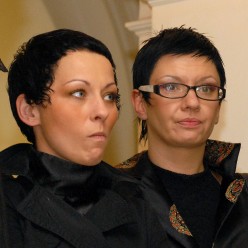
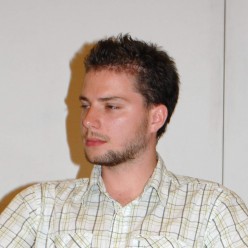
was born in 1981 in Lublin, where he still lives and works. He graduated from the Painting Studio of prof. Jacek Wojciechowski in the Art Department of the Marie Curie-Skłodowski University in Lublin in 2006. He is an artist who works on the border of performance. He is interested in the interpretation of various socio-cultural phenomena. In Zachęta, he presented the installation “Farewell”: in a separate space he built a catafalque with the body of Saddam Hussein. Stachyra does not judge: he does not take sides, he does rehabilitate the dictator. He simply observes that in the light of the Christian faith, we should feel pity also for him. Saddam Hussein was judged and punished. The introduction of the catafalque by the artist is not an attempt to question this decision, but a gesture dictated by the simple decency that commands that care should be taken of the remains of the deceased, even of one’s enemy. However, this assertion loses its innocence in the presence of a guard with a metal detector. We are only admitted to the room after being checked. International terrorism is everywhere and anyone can be a terrorist, or rather terrorists can be on both sides. Nothing is simple or obvious; especially the question of what is right.
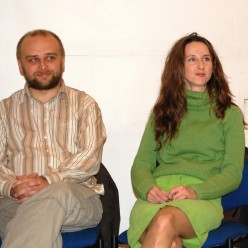
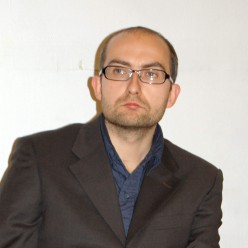
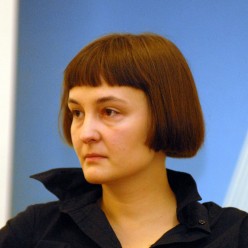
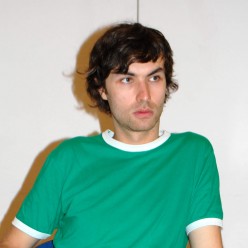
VIEWS 2007
Deutsche Bank Foundation Award
14.09 – 11.11.2007
Zachęta – National Gallery of Art
pl. Małachowskiego 3, 00-916 Warsaw
See on the map
Godziny otwarcia:
Tuesday – Sunday 12–8 p.m.
Thursday – free entry
ticket office is open until 7.30 p.m.

